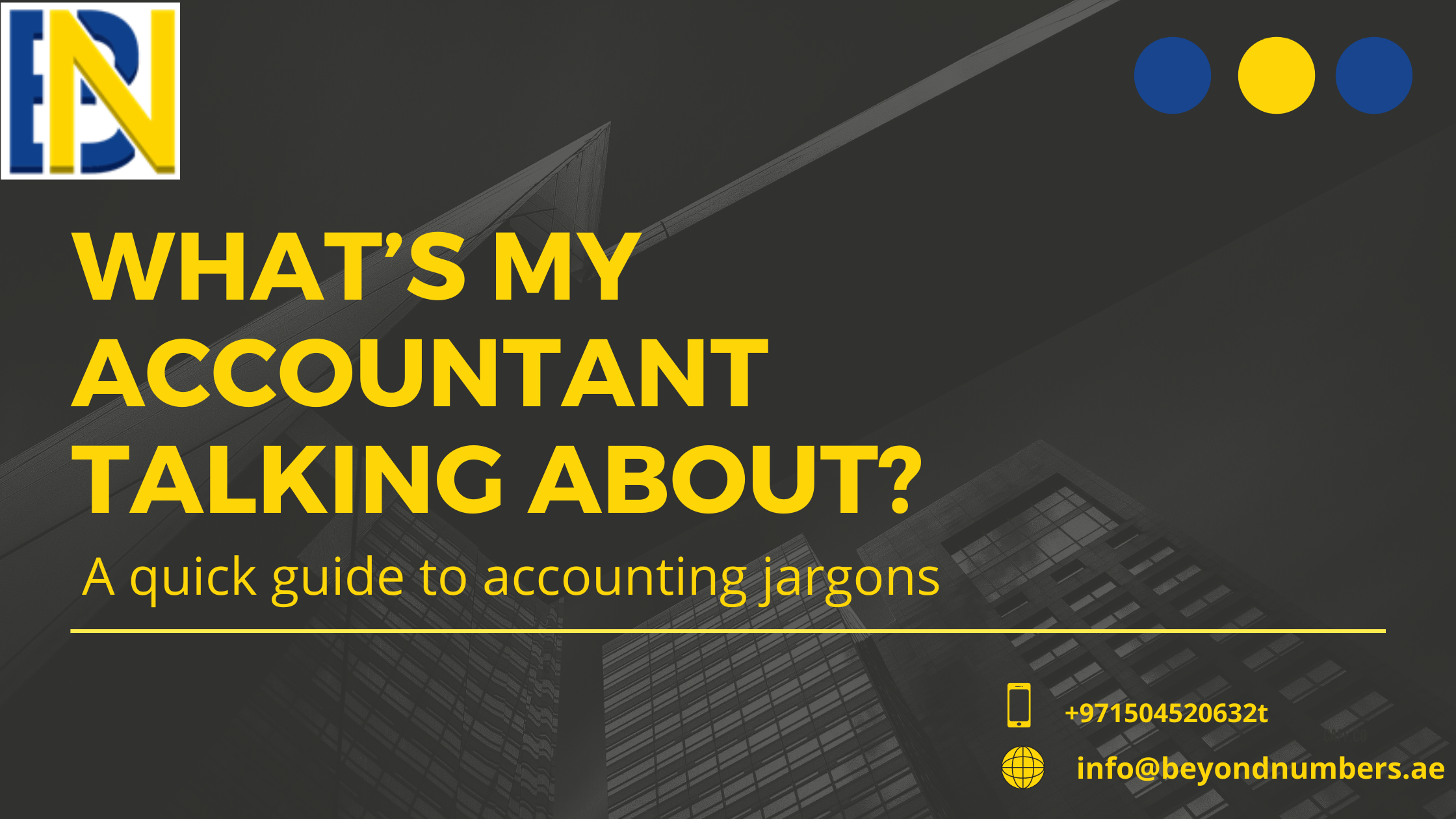When you have a meeting with your accountant, most of you may have a problem of understanding the accounting language, he/she speaks. They might tell you that your accruals are higher in the last fiscal year. What does he mean by that? If you have the same thought process, fear not, you are not alone in this. According to Quickbooks 2015 Small Business Accounting Report, only 40% of business owners surveyed considered themselves to be “extremely” or “very knowledgeable” in the areas of accounting and finance.
Accounting is a field that consists with a lot of jargons and unfamiliar terms. That is why many business owners lack confidence when it comes to the bookkeeping. Let us help you familiarizing with most common terms a business owner is going to hear from his/her accountant. These financial terms can be confusing especially when it is not your cup of tea. But knowing these terms might help you in the long run to move forward in your business.
- Accounts Receivable
These are considered to be an asset to your business. Accounts receivables are any amount owed to you by clients that they are legally obliged to pay.
- Accruals
Accruals are simply a list of expenses that have been incurred but are not yet paid.
- Accounts payable
These are considered to be a liability to your business. Accounts payables are any amount owed by you to your clients that you are legally obliged to pay.
- Accrual Basis
This is an accounting method whereby you record income as it is invoiced (not yet received) and expenses as bills are received (not yet paid).
The other method to be aware of is “Cash Basis”, where you record income only when you receive money and expenses only when you pay the bills.
- Acid Test
This is a stringent measure of a company’s ability to pay its short-term debts. It may also be referred to as “quick ratio” and refers to the ratio of liquid assets to current liabilities. (Liquid assets = cash on hand, or assets which can readily be converted to cash).
- Assets
Assets are the physical items you own that have value. These could include current assets, which are things like stock, cash and accounts receivable, or fix assets, which include items such as buildings, vehicles, equipment or property.
- Bad Debt
This refers to any accounts receivables that you are not able to collect. For example, if the client will not respond or they have been declared bankrupt. This is considered as an expense to your business.
- Depreciation
Depreciation measures the decrease in value of an item over time. For example, say you owned a vehicle that cost AED 50000, which had a depreciation value of AED 10000 per year over 5 years, your list of assets would then show it valued at AED 40000 after one year, AED 3000 after two years, etc.
- Equity
Equity refers to the amount of money invested in a business by its owners. This may be referred to as “owner equity” when there is only one or a few owners, or shareholder equity if it has come from stock options.
- Expenses
Expenses are divided into different types for accounting purposes:
Fixed expenses – Costs that do not vary with changing sales or production; for example, rent, wages or utility bills.
Variable expenses – Those that do vary according to conditions, such as number of sales; for example, if you are an eCommerce store, your postage costs will increase with increased sales.
Accrued expenses – Single expenses that are reported for accounting purposes but have not yet been paid.
Operational expenses – Expenses that are necessary for you to conduct business; for example; insurance, legal fees, office supplies, depreciation, repair costs, accounting fees and software subscriptions.
- Fiscal Year
Fiscal year refers to the time period a company uses for preparing financial statements and for accounting purposes
- Forecasting
Forecasting is the process of using your business’ past financial data to predict future trends. For example, you may notice that you increase sales by an average of 3% per month, so this data could be used to predict what your sales might look like in six months’ time.
- General Ledger
The general ledger is a complete recording of your business’ financial transactions over its lifetime.
- Liabilities
Any debts you are responsible for paying in the short or long term.
- Net Profit
The word net refers to “after all deductions”, so net profit is generally taken to mean what is left over after expenses are deducted from revenue.
- Revenue
Revenue is total amount of money the company brought in from the sales of goods or services, before any expenses are subtracted. Revenue may also include any credits or discounts you have for returning products to suppliers.
- Working Capital
This is the amount you have available to run your business after current liabilities are subtracted from current assets. It may be more or less than what is actually required to fund the business.
Accounting jargons are not easy to catch if you don’t have any accounting background. Hopefully this will help you in understanding your accounting much more. Next time you will be able to ask few questions from your accountant regarding the figures.
Need help simplifying your small business accounting? Email info@p0g.edd.myftpupload.com for more details.
Read more: https://beyondnumbers.ae/benefits-of-having-registered-auditors

